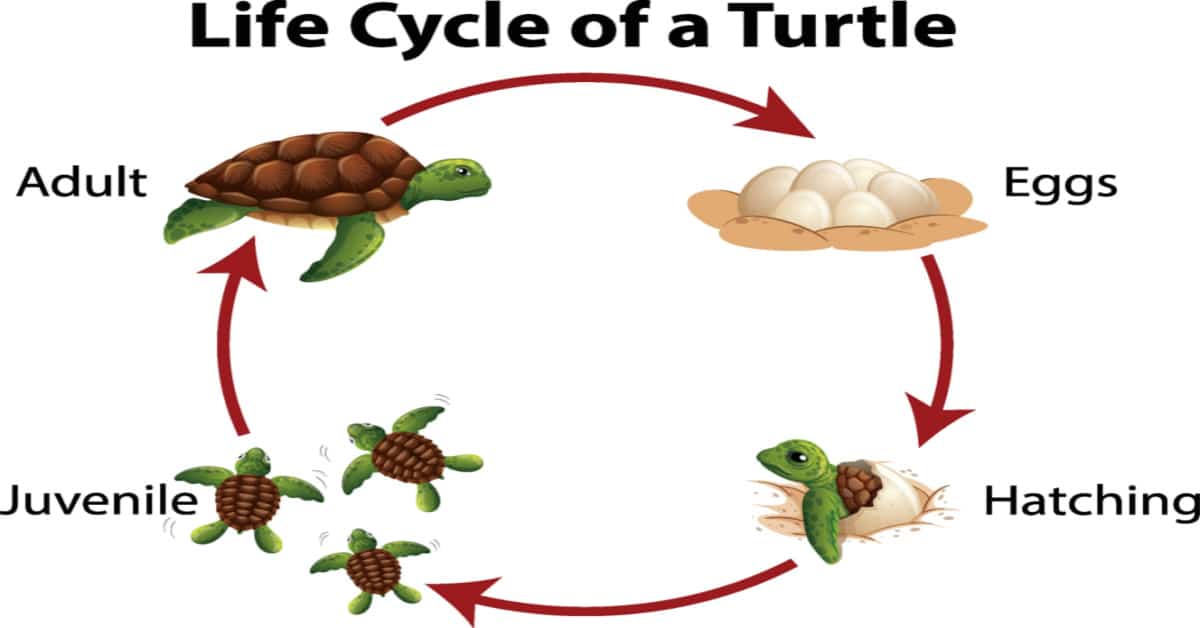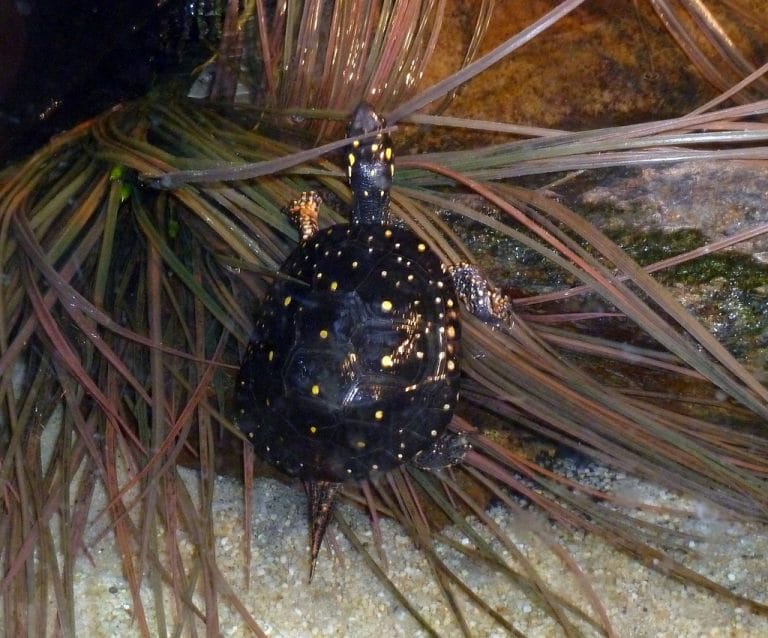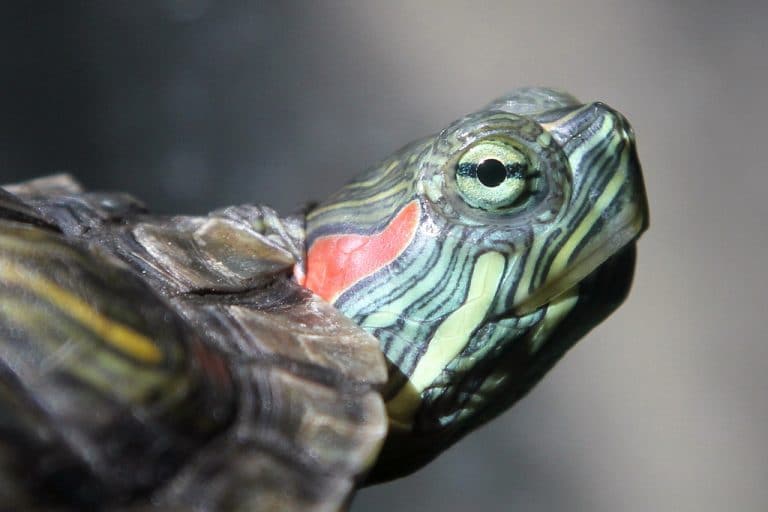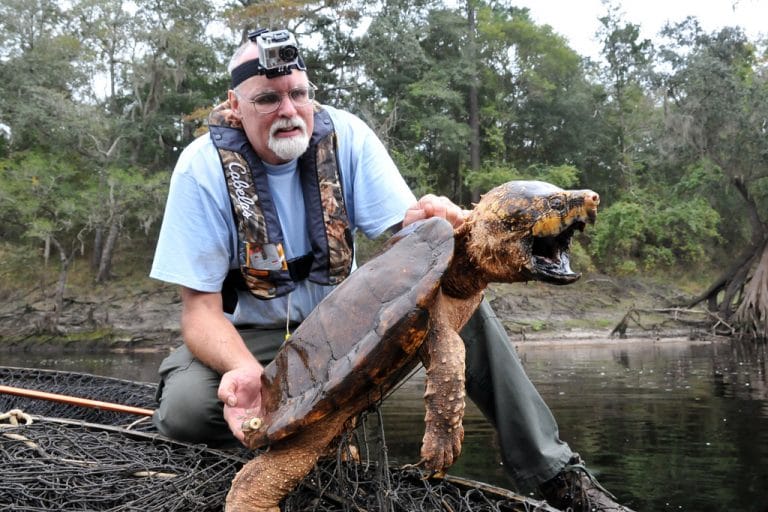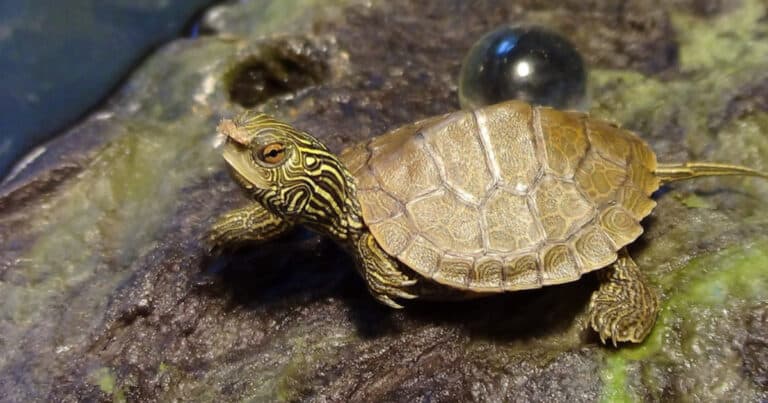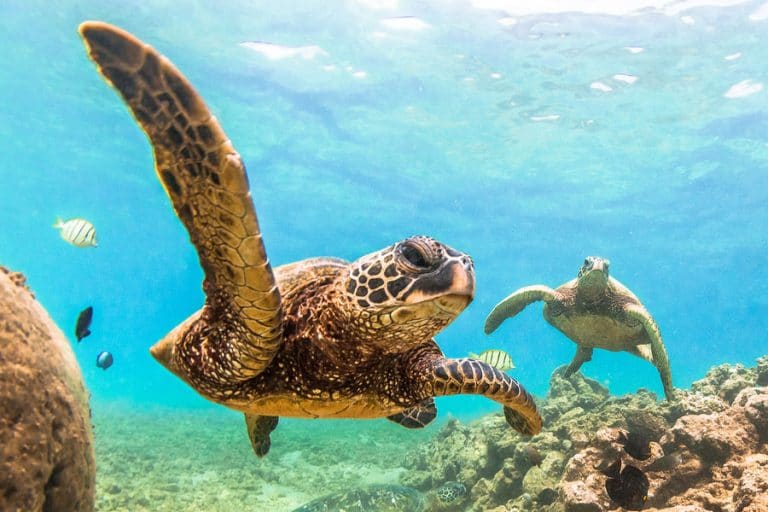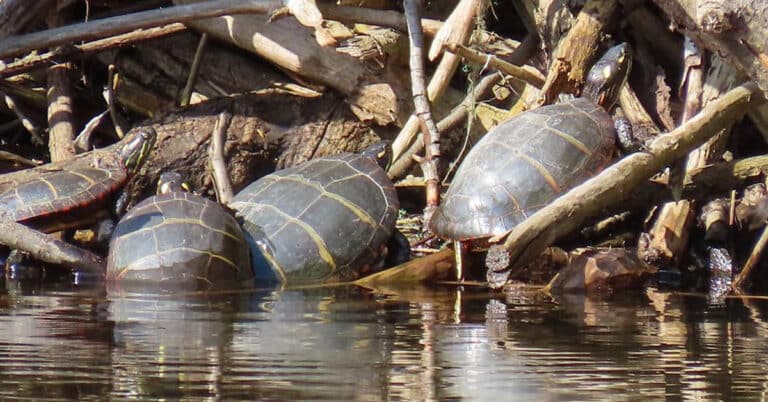Turtle Life Cycle
Turtles are remarkable reptiles that have been sauntering throughout the globe for more than a century. Whether on land, in freshwater ponds and rivers, or in the sea, different turtle species can be found in various habitats. They take pride in being the only animals to walk around with a shell, which they can use as a hiding place in the event of an imminent threat.
Few people are aware of the life cycle of these adorable and gentle creatures, even though they have gained popularity. Turtles go through four periods of growth, similar to how humans do. However, the sole distinction is that turtles can live for more than a century and lay eggs.
Keep reading if you want to learn more about the turtle life cycle, how these creatures develop, and what their unique characteristics are.
The Turtle Life Cycle
Although all turtles go through a similar life cycle, there may be slight variances at each stage of development. Turtles, unlike other animals, have a complex life cycle. Many turtle species have wholly distinct habitats where they can live and breed. However, it all depends on the species.
Typically, the turtle life cycle consists of four main stages, including
- Egg Stage
- Hatchling Stage
- Juvenile Stage
- Adult Stage
Eggs Stage
The first stage of the turtle life cycle is the egg stage. During the nesting season, female turtles migrate to their breeding areas. A few weeks after mating, turtles lay their eggs near the shore, so they are frequently close by. They use their front flippers to excavate a sizable hole once they have ascended over the high tide line or marshy ground.
With their hind flippers, they create a little groove where they lay their eggs. Depending on the species, turtles can produce anywhere between 50 and 200 soft-shelled eggs. They then cover the nest with earth, conceal it by tossing branches or other debris around and swim back to the ocean.
Turtles bury their eggs and, unlike other creatures that stay near them, offer security. Turtle eggs are spherical or oval and have a softer feel. The time it takes to build a nest might range from 45 minutes to 5 hours. The turtle life cycle continues to the next stage – The hatchling stage.
Hatchling Stage
The hatchling phase is the next stage of the turtle life cycle. How long it takes for the eggs to hatch depends on the temperature of the sand around the nest. Baby turtles grow a temporary tooth called a caruncle while still in the eggs. They use their caruncles to crack the eggshell when it’s time to emerge from their shell.
The hatchlings typically leave the nest at night to avoid predators and heat fatigue. Baby turtles have a remnant yolk sack on the underside of their plastron when they first hatch. The turtle is fed by the yolk sack until it begins to forage for food.
One fascinating fact is that the nest’s temperature controls not only the incubation period but also the turtle’s gender. The eggs hatch into female turtles in warmer weather, whereas in cooler weather, they hatch into male turtles.
Juvenile Stage
Juvenile is the stage of the turtle life cycle reached after hatching. The hatchling develops into a juvenile and moves to the coastal regions after spending a year or two in the oceanic zone. They relocate to an area of the ocean that is very productive, where they can find enough food to last them until they are adults. Foraging grounds or coastal areas are names for these areas.
Foraging locations typically have a lot of food, but they also frequently have a lot of predators living there. Hatchlings must therefore wait until they are strong enough to avoid and flee from predators in coastal locations.
A newborn turtle’s buoyancy is also impacted by the addition of foreign objects to its body, which may impair its ability to travel through the water. The juvenile years are therefore referred to as the “lost years” because so little is known about them. The next and final stage of the turtle life cycle is adulthood.
Adulthood Stage
The final stage of the turtle life cycle is the adult stage. Depending on the species, turtles reach adulthood after 10 to 50 years. When a turtle reaches sexual maturity, it is referred to as an adult. However, a turtle’s outward look does not always indicate whether it is an adult.
While some turtles are tiny in size, even in their 30s, some can get larger at a younger age. On the other hand, female turtles may get bigger before they reach sexual maturity. The only way to know if a turtle is sexually mature is to keep track of when it hatched and monitor its development to adulthood.
Turtles travel to regions where they can mate after reaching maturity, where they eat and accumulate enough food. Female turtles migrate to these regions to lay their eggs, while male turtles migrate there to mate.
The distance between the breeding zones and the feeding location might range from hundreds to thousands of miles. Most females go back to the nests from where they first emerged. Turtles are said to return to mate and breed on the same beach or area where they initially manifested as hatchlings. Natal homing is the practice of a grown turtle returning to the location of its birth.
Although there may be great nesting spots close by, most turtles choose to go back to the place where they hatched. If a mother returns to the place where she was hatched, there is a good likelihood that her offspring will also survive, as explained by the process of natural selection.
Mating Habits of Turtles
In the adulthood stage of the turtle life cycle, these creatures start to mate. Sexually mature male and female turtles relocate from their eating locations to breeding regions near nesting zones once the mating season starts. Male turtles are quite aggressive during this time and will attempt to mate with as many females as they can.
While female turtles only require the sperm of a single male to fertilize all of the eggs, this does not always happen, resulting in multiple paternity. Multiple male turtles can fertilize the eggs in a single female within a season due to the aggressiveness of male turtles during the mating season.
Males can travel to several locations to mate with as many females as they can, unlike females who remain in one nesting spot. They return to the feeding area and continue scavenging for food, though, after mating with a few females and moving to different breeding regions in search of additional females to mate with.
Turtle Lifespan
Depending on their species, turtles have a wide range of life spans. An average pet turtle can live for between 10 and 80 years; however, larger species can easily survive for more than 100. The world’s oldest known animal, Harriet the turtle, passed away at the age of 175 years.
Scientists are still baffled by some turtles’ life spans, especially endemic species like the Galapagos tortoise that have long lived in isolation. The age of turtles is difficult to determine for obvious reasons, but some scientists think they could be 400–500 years old! Turtle lifespan explains why stages of the turtle life cycle last longer than other creatures’
Interesting Facts About Turtles
- The biggest kind of turtle is the leatherback. An adult leatherback is 1.2 to 1.9 meters long and weighs 200 to 506 kilograms. The biggest leatherback ever observed weighed 916 kilograms.
- They have little flaps of skin covering the internal ear bones. Although their hearing is not sensitive, the turtles can hear to some extent because the skin flaps allow vibrations and low-frequency sound to reach their ear canals.
- The type of turtle and its natural environment has a significant impact on what it eats. Some turtles eat meat, while others only consume vegetarian foods. However, the majority of turtles are omnivores and consume both vegetation and animals.
- All turtles produce eggs, which they bury in vegetation, sand, or dirt. While some species only produce a few oblong eggs, others can produce up to 100 or more spherical eggs.
Final Words – Turtle Life Cycle
Turtles are special creatures in addition to being essential in maintaining the ecosystem. Since almost all turtle species are in danger of going extinct, it is up to people to take care of them and safeguard them.
Now, you know about the turtle life cycle, which consists of four stages: the egg stage, hatchling stage, juvenile stage, and adult stage. If you have a pet turtle, you must understand the inherent requirements of turtles at various growth phases if you want to give your turtle the finest care possible.
Understanding the turtle life cycle should be the first step in understanding the issues that these species confront throughout their lifespan because most risks to turtles are caused by human activity.

Nato is a content writer and researcher with a background in psychology who’s eager to explore the wonders of nature. As a travel enthusiast and animal lover, she hopes to inspire others to discover and cherish the beauty and importance of the natural world.

